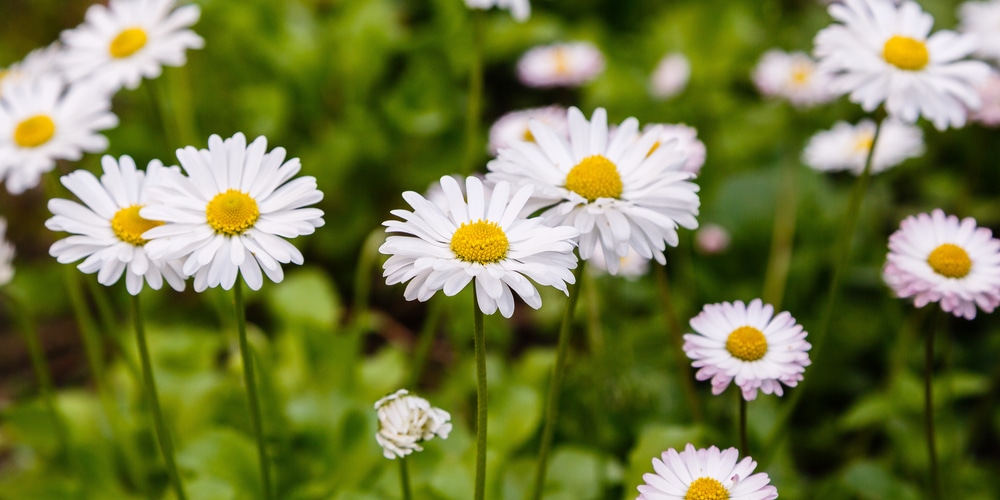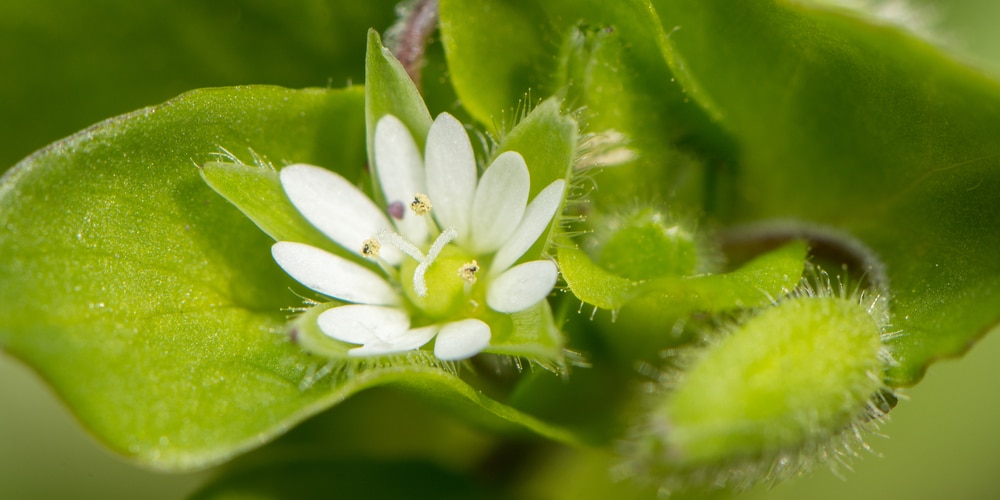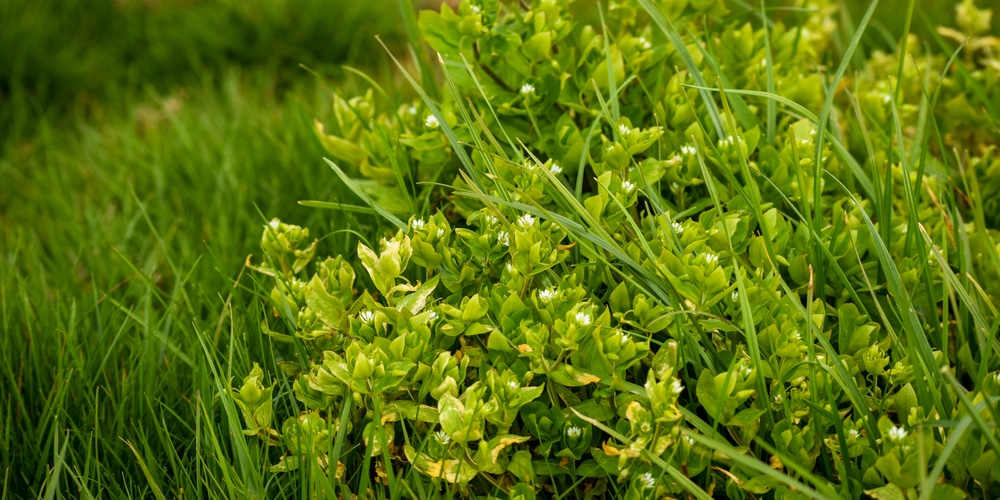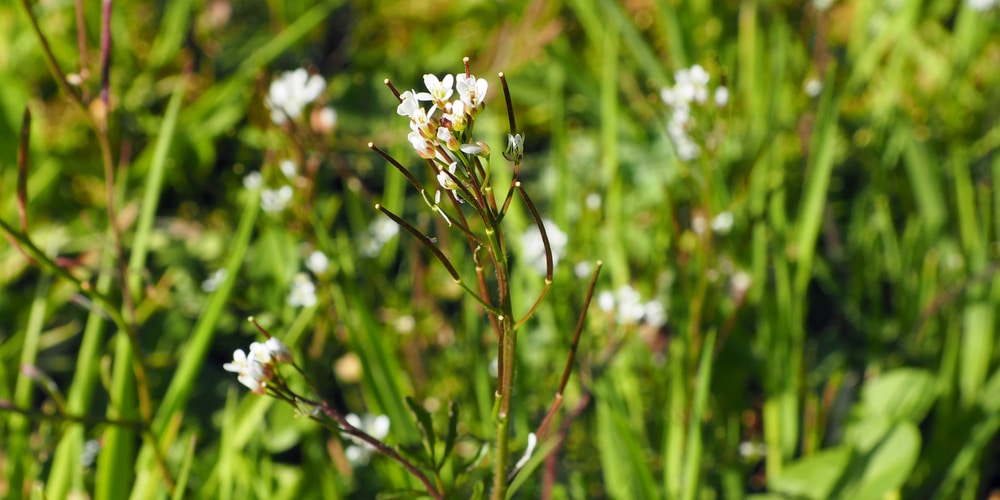Let’s be honest: growing a lawn and maintaining it can be challenging. Besides frequent mowing and watering, you’ll have to feed your grass with suitable nutrients and remove weeds. And while seeing your green lawn scattered with little white flowers in the grass might look cute, their presence is the symptom of weeds attacking it.
So, if you notice white flowers in the grass, you probably have to take some measures to remove them. Many weeds produce white flowers. So, learning how to identify them can help you know the proper action you should take.
In this essential guide, we’ll go over the plants that might be causing your lawn to display blooms so that you can make up your mind about what to do about them.
Little white flowers in grass
White Clover
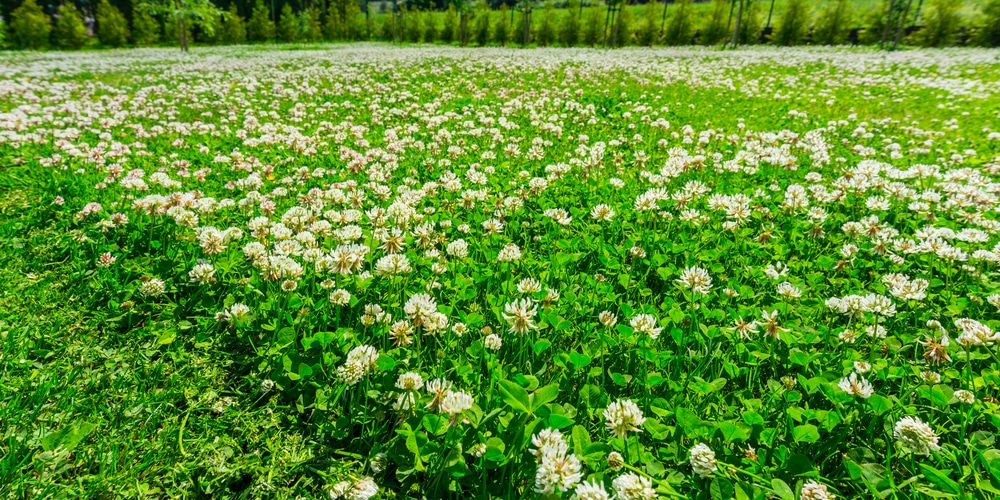
One of the most common reasons for the presence of little white flowers on your lawn is white clover. This perennial weed will come back every year if you don’t take measures to remove it. And not containing it might cause this weed to choke out your grass.
White clover usually grows in areas with poor nitrogen content with little competition from other plants. So, one of the best prevention methods is to keep your lawn well-fertilized.
Doing so will also prevent this weed’s spread. Another effective method to remove white clover from your yard is pick it by hand.
Keep in mind that such a solution will work best for small areas. Remember to pull the weeds with their root system to prevent re-growth.
But if you notice several flowers, you might have to consider applying herbicides. Beware: while chemicals might effectively remove white clover, they will also kill other plants that get into contact with the products.
Also, choosing the wrong solution might harm your lawn. Ensure you pick a product suitable to your grass type and follow the instructions you find on the label.
Daisy
Daisy is a common weed that might look cute on wild lawns, but you should remove it in your garden. You’ll probably have no issues recognizing this weed!
Despite looking nice, these plants will deprive your grass of essential nutrients and eventually cause it to become unhealthy. These plants adapt to various soil conditions and grow even on mowed lawns.
Thus, taking action as soon as possible will make a considerable difference in their containment.
If you have a few daisies on your lawn, hand-picking them might be a suitable solution. You can use a daisy grubber for effective results. However, if the infestation is considerable, we recommend you apply a herbicide solution. To limit the damage to other plants, consider purchasing a spot treatment.
While using more product than suggested might be tempting, avoid that. Instead, follow the instruction you find on the label and be patient!
Common Mouse Ear
The common Mouse-Ear is a less common weed that might appear in your garden and produce little white flowers.
These weeds spread quickly and will survive mowing. Because of their aggressive growth, they might take over your garden if you don’t take appropriate removal measures.
Despite their delicate looks, these plants will damage your lawn. The blooms appear from late spring to fall from a mat of dark green and hairy leaves.
Hand-picking these weeds is a method effective for small areas. Instead, applying a herbicide will give you more effective results. Look for selective treatments to prevent damage to other plants or grasses nearby.
To get the best results, apply the solution on a warm day with little wind and a low probability of rain. Don’t forget to water your lawn afterward to increase the product’s absorption.
Chickweed
Chickweed is an annual weed that produces flowers that resemble daisies. These plants thrive in rich and moist soil: they often appear in overwatered lawns.
So, to prevent their spread, avoid pouring too much water on your grass. Because of chickweed’s shallow root system, you can remove these weeds by hand pulling.
However, keep in mind that the task might be time-consuming for large lawns. Alternatively, you can use a broadleaf herbicide.
Hairy Bittercress
Lastly, hairy bittercress is an annual weed that emerges in early spring and thrives in cool and rainy environments. Because of its aggressive spread, this weed is challenging to eradicate.
Due to the long taproot, pulling bittercress by hand won’t be a suitable solution. Instead, apply a post-emergent herbicide in early fall to prevent its appearance in the spring.
